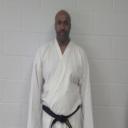Yahoo Answers is shutting down on May 4th, 2021 (Eastern Time) and beginning April 20th, 2021 (Eastern Time) the Yahoo Answers website will be in read-only mode. There will be no changes to other Yahoo properties or services, or your Yahoo account. You can find more information about the Yahoo Answers shutdown and how to download your data on this help page.
Trending News
How did Bassai get into the Taekwondo/Tangsoodo curriculum?
I know Bassai is of Okinawan origin but I'm unsure as to which style it was developed in. Finding the answer to this question could potentially answer another thing that come to mind:
1) Which ever TKD/TSD styles practice this form, unless it is borrowed from another curriculum, has some (if not direct) connection with an Okinawan form of Karate.
7 Answers
- possumLv 77 years agoFavorite Answer
Several notable points of history should be pointed out:
1. Japan occupied Korea from late 1800's to mid 1900's.
2. During this time, Korean culture - including language - was nearly annihilated. As a result, many older Koreans speak Japanese more fluently than Korean - even today. Hence, "nunchaku", "bokken", "hakima", and "karate" are martial arts terms that are regularly used in Korean martial arts. Don't blame the Koreans for using Japanese words, it is because Japanese was all they were taught.
3. When the Koreans were taught martial arts, they were only allowed to learn Karate, Kendo, and Judo. Using Chinese letters to spell out the respective Koreanized martial arts, we get "Tangsoodo", "Kumdo", and "Yudo", respectively. These Korean styles are very similar (in Kendo/Kumdo, they're nearly identical).
You may be interested to know that the Pinyan forms of Karate were also borrowed by the Koreans, who pronounced them "Pyong-an". Not only does TSD use B/Passai, but they also use the Pinyan forms, which they refer to as Pyong-an.
So it isn't that B/Passai was introduced into TSD/TKD. Rather, TSD/TKD evolved into what it is today beginning with Karate, which itself contained B/Passai.
As to naming, there is no sound in Korean that exactly sounds like "B" or "P", but there is a sound that sounds like both, and we westerners cannot discern the sound - it is a softer "P" but a harder "B". You may spell it "bassai" or "passai" and you would be equally correct.
Early Chung Do Kwan Taekwondo also used the Pyong-an forms as well - some do to this very day.
- pugpaws2Lv 77 years ago
I don't know of any connection between any of the more than 75 different styles of TKD and Okinawan Karate. Some of TKD was influenced by Japanese Karate which was influenced or came from Okinawa. That said, I see Japanese Karate as missing some of what
Okinawan styles have and Korean styles that have some Japanese influence having less than the Japanese styles as far as the detail s hidden in Kata. And of course Kata and more importantly the hidden applications in them is what in most important. Perhaps there is a Korean style that has a version of Bassai, but, if there is it will not be the same.
...
Source(s): Martial arts training and research since 1967. Teaching martial arts since 1973. - 7 years ago
1) General Choi was a Nidan (2nd degree) in Shotokan/Okinawan Karate. He used what he learned there in created his version of Taekwondo (ITF) with the Ch'ang Hon, aka Blue Cottage or Chon Ji forms.
2) The older books, especially one called "The Complete Book of Taekwondo Forms" by Keith Yates, has Bassai/Passai in it.
3) Some of the other TKD founders knew Aikido, Judo/Yudo, Jujitsu, Hapkido, Karate, so it is only natural that some of those techniques show up in TKD.
4) http://en.wikipedia.org/wiki/Hyeong has a listing of the Official forms for ITF, along with 3 other ones, as part of the Unofficial Syllabus:
"Bassai[edit]29 movements Bassai is also Okinawan in origin and is practiced in Taekwondo and Tang Soo Do (tangsudo) as well as many Japanese and Okinawan Karate styles. Bassai is also known as Balsek. Bassai is often translated as "to break down the fortress". The Korean pronunciation of the characters that make up Bassai is "Patsai". It is usually associated with the Cobra, because of the quick, snapping motions of the techniques. (This pattern normally resides between Choong-Moo and Kwang-Gae)"
Really, you could say that ITF Takewondo is Shotokan 2.0. And you would probably anger a lot of people by saying that. But come on, Choi was a Nidan in Shotokan, AND one of the intermediate forms, Won Yo (and technically, Bassai), is in at least 4 different styles: Tangsoodo, Shotokan, Shorin Ryu (Okinawan), ITF Taekwondo. The only difference is that the Korean versions may or may not have a couple of mid/high side kicks instead of a low front kick. That's all the proof I need that Taekwondo comes from Karate. That is NOT a bad thing. It is only an issue because of the history of conflict between Korea and Japan. Korea wanted its own martial arts, free of Japanese allegiance. Ok, fine. But don't deny the truth. And don't be American and get caught up in that hoopla. That is where a lot of the style bashing comes from. Let's be martial artists, and progressive artists, learn from the past mistakes of humanity, and move on.
Source(s): http://www.amazon.com/Killing-Art-Untold-History-K... http://www.amazon.com/The-Complete-Book-Taekwon-Fo... http://en.wikipedia.org/wiki/Hyeong - jwbulldogsLv 77 years ago
This is my understanding. That Passai was shared with the Japanese. They began to call it Bassai. Later when the Japanese shared karate with the Koreans some schools kept the name Passai and others used the Japanese name Bassai.
Source(s): Martial Arts since 1982 - How do you think about the answers? You can sign in to vote the answer.
- ?Lv 47 years ago
You have already gotten great answers. Still If you were to look at how the Korean styles do their Kata, they are not the Okinawan way but rather the Shotokan way (in general). Some of the founders of Korean arts studied under Funakoshi which makes me wonder it reverting Karate to the Korean spelling of To-Ti was respect for Funakoshi. They also reverted the names of the Kata back to the Okinawan names
- KokoroLv 77 years ago
In the 1950's tang soo do was influenced by shotokan and incorporated many of the kata from shotokan including bassai, unforchunetly they never incorporated the bunkai, bassai line many of the kata includes both striking and grappling in its applications
Source(s): 30+yrs ma






